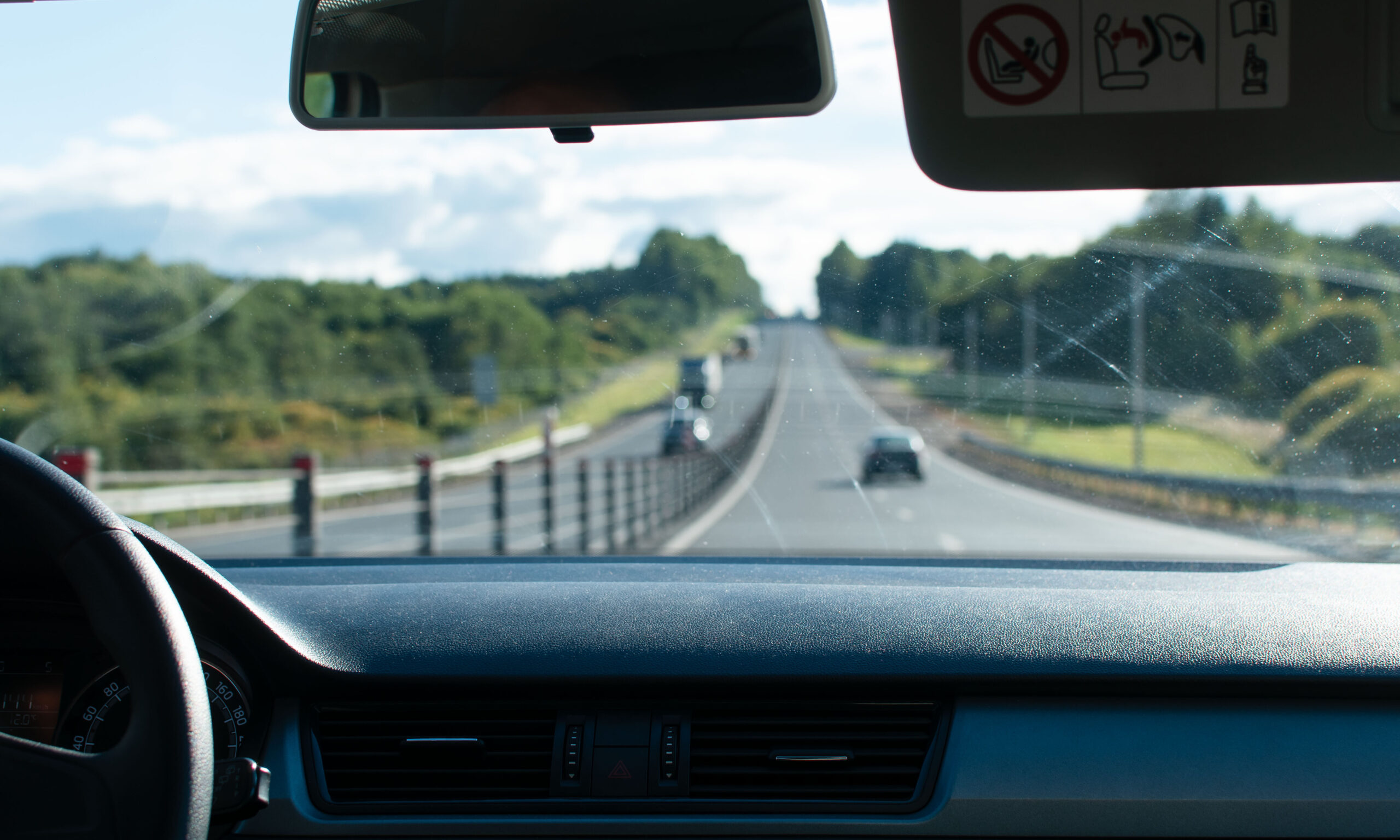Book a Consultation
Find out why so many clients appreciate the amount of work we put into their case.
"*" indicates required fields
Call 24/7

Defensive driving is more than just following the rules of the road; it’s about anticipating potential hazards and being prepared to react appropriately. One of the most crucial components of defensive driving is maintaining a safe following distance, a habit that reduces accidents and makes the roads safer for everyone.
This article will explore why maintaining a safe distance is essential, how to calculate it, and the consequences of neglecting it. Through this practice, drivers can significantly reduce their chances of collisions and improve their overall driving experience.
Maintaining a safe following distance is one of the simplest yet most effective ways to prevent Rear-end collisions in Salt Lake City. Statistics consistently show that tailgating is a leading cause of accidents, and leaving ample space between vehicles can make all the difference.
When you maintain a proper distance, you’re allowing yourself more time to react to unexpected changes, whether it’s a car braking suddenly or debris on the road. This increased reaction time could mean the difference between a close call and a dangerous collision.
Moreover, keeping a safe distance can lead to a less stressful drive, reducing frustration and the potential for road rage. In heavy traffic, drivers often feel pressured to follow too closely, but staying back provides a buffer that lets you drive more calmly and confidently.
One of the most straightforward methods to calculate a safe following distance is the three-second rule. To apply it, choose a fixed point along the road, such as a sign or tree. When the vehicle in front of you passes that point, count the seconds it takes for your vehicle to reach the same spot.
If it’s less than three seconds, you’re following too closely and should increase the gap.
While the three-second rule works well in normal conditions, it’s important to adjust for factors such as speed and environment. Higher speeds demand longer stopping distances, so, at highway speeds, you may need four or more seconds to stay safe.
Additionally, adverse weather conditions like rain, snow, or fog can increase the time it takes for your vehicle to stop, requiring a greater following distance—often doubling it.
At night or when driving on slippery or uneven terrain, the following distance should also be increased. Limited visibility or road conditions can lead to unexpected hazards, and extra space gives you more time to react.
Several external factors can affect how much following distance you should maintain.
Traffic conditions play a significant role. In congested areas, drivers are more likely to tailgate in an attempt to keep up with traffic, but this is exactly when following distance rules is most crucial. Keeping a safe gap in these situations reduces the chance of a chain-reaction accident if something happens in front of you.
The size and load of your vehicle also matter. Larger or heavier vehicles, such as trucks or vehicles towing trailers, require more space to stop safely.
If you’re driving a smaller car, keep in mind that vehicles behind you may not be able to stop as quickly as you can. Maintaining a larger buffer is crucial for these situations.
Additionally, if you’re tired or distracted, your reaction time is slowed, making it even more important to give yourself extra space. Modern distractions, such as smartphones and in-car technology, can be significant hazards, but maintaining a proper following distance gives you a margin of safety if your attention drifts momentarily.
Maintaining a safe following distance is crucial for preventing accidents and avoiding a wide range of serious consequences. Failing to do so can result in various legal, financial, and personal repercussions, all of which can have long-lasting impacts on a driver’s life.
Maintaining a safe following distance driving behind another vehicle is essential to defensive driving, giving you ample time to react and avoid collisions.
Here’s a breakdown of safe driving distance tips to help maintain a safer buffer between your vehicle and others.
A sharp sense of awareness is crucial when it comes to maintaining a safe following distance. By being vigilant and focused on the road, you can spot changes in traffic flow, hazards, or sudden stops.
This situational awareness helps you make quick adjustments to your speed or positioning as needed, ensuring you’re not caught off guard by other drivers’ actions.
Distractions are one of the greatest threats to maintaining proper distance on the road. Avoid using your phone, eating, or engaging in any activity that diverts your focus from driving.
Each distraction limits your reaction time and increases the likelihood of tailgating or failing to notice an upcoming hazard. By eliminating these distractions, you can stay fully tuned in to the dynamics of the traffic around you, making it easier to control your following distance.
Defensive driving is about knowing not just what’s happening ahead but all around you. Frequently checking your mirrors allows you to track vehicles behind and beside you, giving you a fuller picture of the traffic situation.
This awareness enables you to adjust your distance based on how other drivers are behaving, such as if a vehicle behind you is approaching too fast or preparing to change lanes.
Looking beyond the vehicle in front of you is essential for maintaining a safe distance. By scanning several vehicles ahead, you can anticipate upcoming hazards, like traffic jams, sudden stops, or road obstacles.
This proactive scanning allows for smoother adjustments to your following distance, as you won’t be reacting solely to the immediate actions of the car ahead but to the broader traffic flow.
Driving conditions are rarely static, and your following distance should change accordingly. If traffic speeds up or slows down, or if the weather deteriorates, such as in heavy rain or fog, increase the distance between you and the car in front.
Poor visibility and slick roads require more time to brake and maneuver safely. Adjusting your following distance ensures you can respond appropriately to unexpected situations, minimizing the risk of accidents.
Maintaining a safe following distance is a fundamental aspect of defensive driving. It prevents collisions, gives you more time to react to unforeseen events, and contributes to a more relaxed and confident driving experience.
By following the three-second rule, adjusting for environmental conditions, and staying alert, drivers can significantly reduce their risk of accidents. When every driver commits to these habits, roads become safer for everyone.
However, accidents can still happen, even when you’re cautious. If you or a loved one has been injured in a car accident due to another driver’s negligence, Valley Law Accident and Injury Lawyers can help you navigate the legal process and seek compensation for your injuries.
Don’t hesitate to get the support you need—contact a Salt Lake City car wreck attorney at (801) 803-5292 for a free consultation today.
Get in touch


2021 and 2022 Gold Winner for Top Law Firm by Salt City Best
Call 24/7 801-810-9999